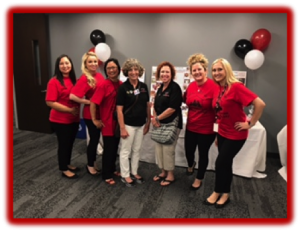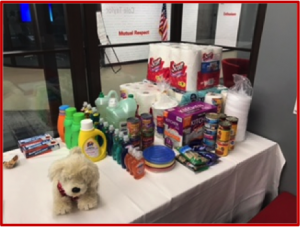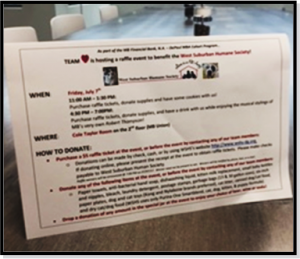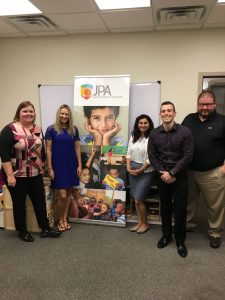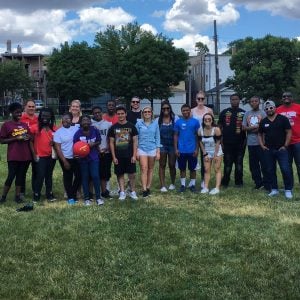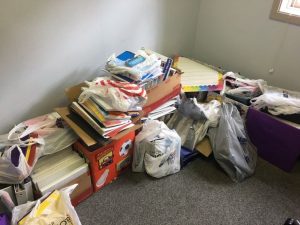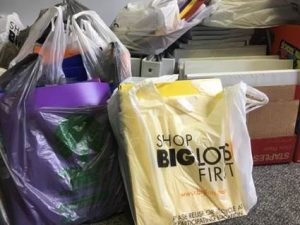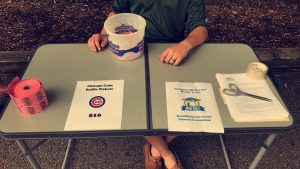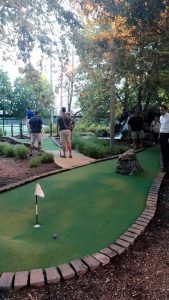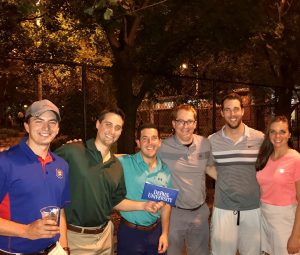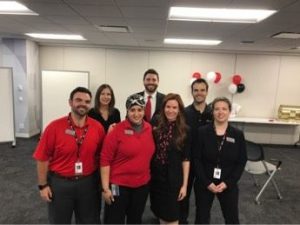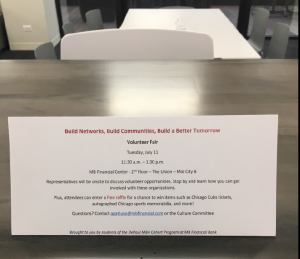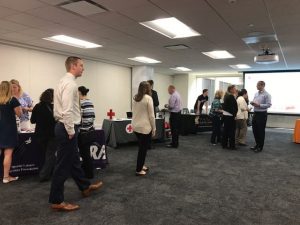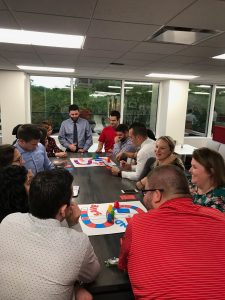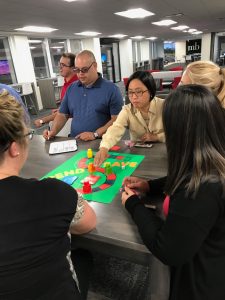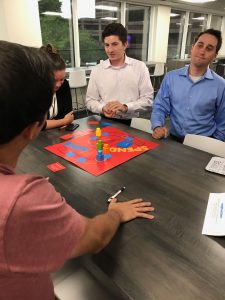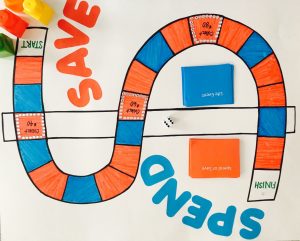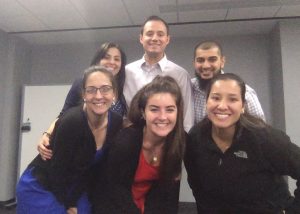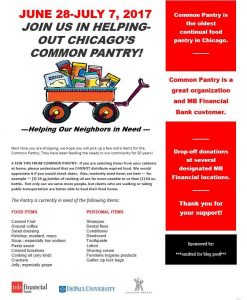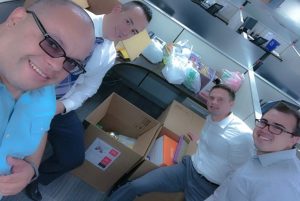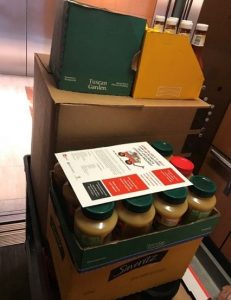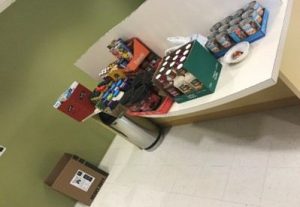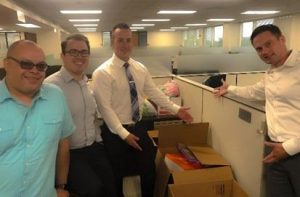PROJECT DESCRIPTION:
Our team’s mission was to raise funds and collect in-kind donations (supplies) for the West Suburban Humane Society (WSHS). We chose to support this non-for-profit organization by selling raffle tickets ($5 donation per ticket), getting general donations (no tickets purchased), and collecting supplies for the shelter (dog/cat food, paper towels, laundry detergent, etc.). We held an event on 07/07/2017 at our place of employment in two parts: a lunch session “Meet and Greet,” and a Happy Hour session after work. We provided cookies for the Meet and Greet and served snacks and beverages during the Happy Hour. The prizes for the raffle (all donated) included the following:
- 1st Prize: Two VIP tickets to see Chicago and the Doobie Brothers at Northerly Pavilion
- 2nd Prize: Two tickets to see All Time Low at the Aragon Ballroom
- 3rd Prize: Two tickets to SkyDeck Chicago (ten sets available)
We collected donations in the weeks leading up to the event and during each part of the event. The Executive Director and Humane Educator from WSHS pulled the raffle tickets at the end of the night to announce the raffle winners.
CHARITY DESCRIPTION:
WSHS operates a premier animal shelter in Downers Grove, Illinois for the purpose of finding safe, permanent and compatible homes to adopt domestic dogs and cats. WSHS serves as a resource to educate the community and animal owners about responsible dog and cat care. One of their many values is to always act ethically and in the best interests of animals and potential adopters alike.
FACTUAL ANALYSIS:
Team Heart set a goal to raise $1,000 and collect 5 boxes of supplies for WSHS. We more than doubled our goal by raising $2,378 and collecting 6 boxes of supplies for WSHS!
LESSONS LEARNED:
1) HAVE FUN! Our group had a great time supporting WSHS in the weeks leading up to the event and during the event itself. We had musical entertainment and served snacks and beverages. The more fun we were having, the more successful we were.
2) ACT QUICKLY, STAY ON TRACK: A huge part of our success came from identifying our stakeholders and contacting them as soon as possible. As soon as we chose our charity and event location, we contacted all the appropriate parties right away (venue facilitator, employer HR department, employer facilities, WSHS representatives, “connections” who provided raffle prizes, and most importantly, the potential donators). Constant communication keeps everyone on track.
3) IF YOU DON’T ASK, THE ANSWER IS ALWAYS NO!: Each time we came up with an idea, we contacted the person who we needed permission from to execute it. Each time we had the opportunity to sell raffle tickets to someone, we took it (at work, home, parties, family events, etc.). Each time we had the opportunity to ask someone if they had any of the requested supplies laying around the house, we asked them. Each time we had a suggestion for the group, we threw it out there. Getting past the fear of rejection helped us to build a momentum that lasted throughout the whole fundraiser. If we didn’t go for it, we knew the answer would be no!
ADVICE FOR FUTURE TEAMS:
Be mindful of scope creep. Our team was excited about our cause which led to lots of creative ideas flowing. All five of us had tons of ideas about how to collect the most donations, how to choose the raffle prizes, how to decorate for the event, how to generate revenues through multiple streams, how to promote our event, etc. Since we only had 5 weeks, we didn’t have time to explore every avenue. There were many times that we had to recognize that we didn’t have enough time to expand our plans, or we would have let the scope get too large and unmanageable.
